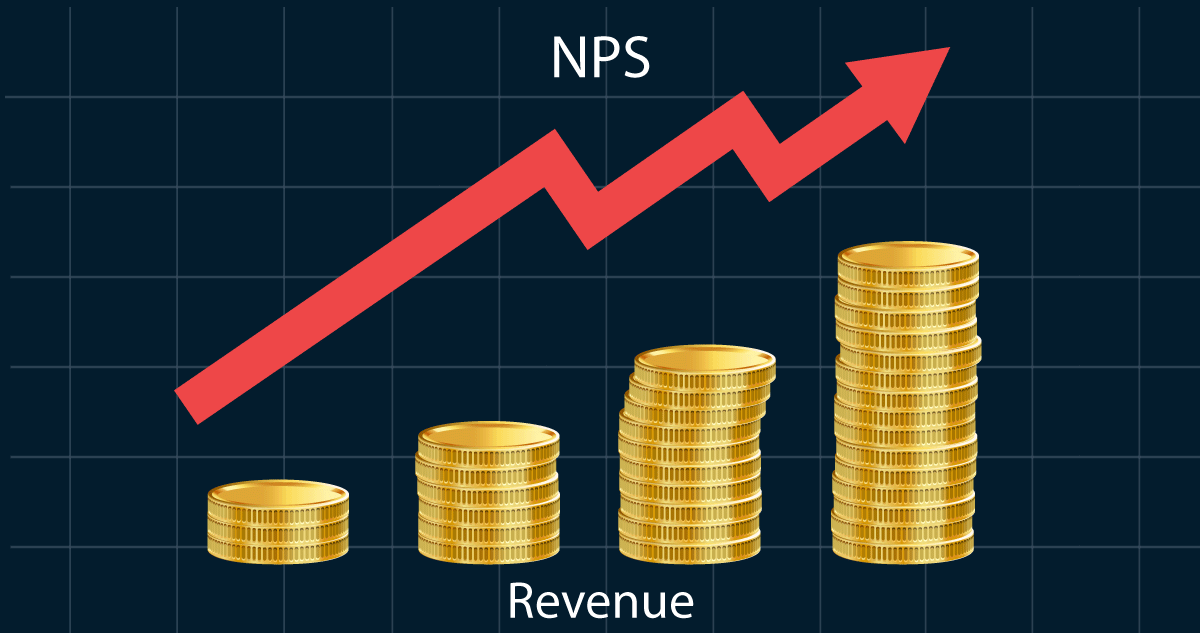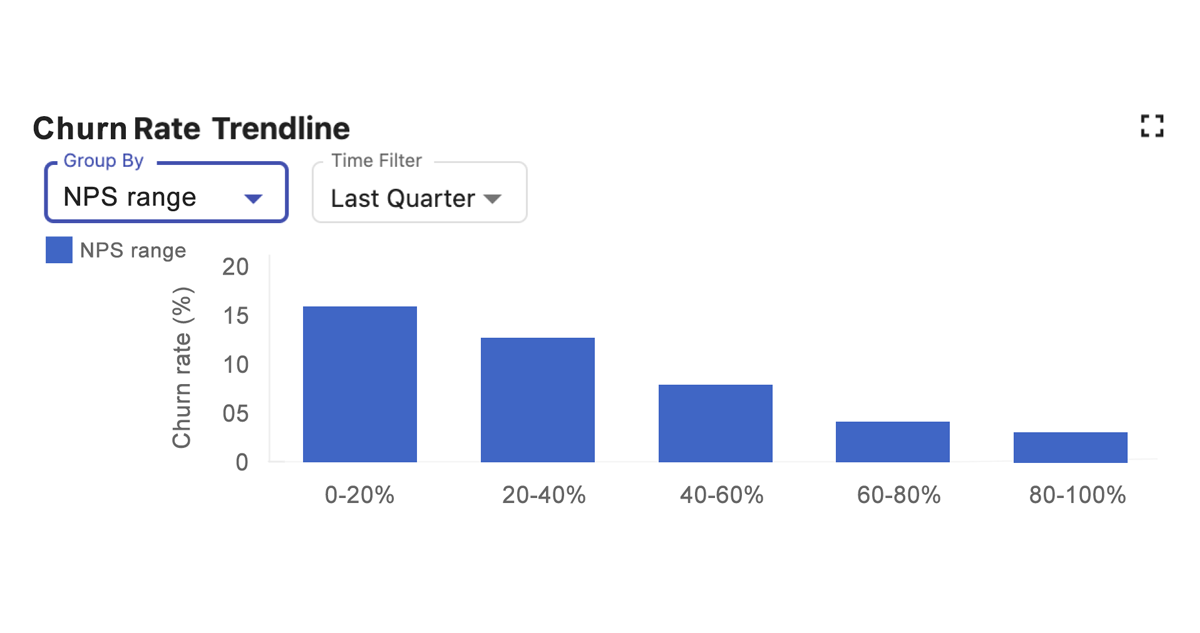NPS and Its Impact on Revenue
An NPS score is like a thermometer of customer satisfaction


An NPS score is like a thermometer of customer satisfaction – it gives you a quick temperature reading, but you need to interpret it in context to understand the whole picture. When the NPS thermometer measures high, it’s good for your business. On the other hand, lower NPS readings mean revenue risks and improvement opportunities.
Tracking the impact of NPS score
Be it high or low NPS, you should track it regularly to better forecast expansion revenue, retention, and churn. Customers who are happy with your brand are more likely to stick around, recommend you to others, and continue to do business with you. On the other hand, dissatisfied customers are more likely to leave for the competition, spread negative feedback, and hurt your bottom line.
Survey customers
You should survey your customers regularly to measure their satisfaction with your brand. Reach out to them once a quarter, maybe even monthly depending on the size of your respondent pool. NPS surveys should also be timed appropriately. For example, if it’s timed after a significant change in the product or service, the NPS score will give you a good idea about how the changes are actually being received by the users..


Understand the context
It is also important to leverage NPS survey data to understand the relationship between customer satisfaction and customer behavior. For example, how do the NPS scores of customers differ between those customers that have actually referred your product or service to others, and those customers who have not. Track revenue and repeat business from satisfied customers and compare revenue with high NPS scores to those with low NPS scores.
Monitor churn and expansion revenue impact
Monitor your revenue metrics to see how the NPS score impacts customer retention and expansion. A high NPS score might correlate with a lower churn rate, but not always. Even with a high NPS score, there can be a significant churn rate in some situations. Such situations include:
- The champion or key stakeholder leaves the organization.
- There’s a budget crunch or shift in the company’s priorities.
- Mergers and acquisitions
- Alternatives become available at cheaper costs.
However, a high NPS score often correlates to revenue expansion. Customers who’re promoters of your product are likely to refer more, contributing to revenue expansion. Low NPS, on the other hand, doesn’t often correlate to retention. However, a product’s detractors are less likely to recommend it to others, leading to loss of revenue expansion opportunities.


There are of course, additional ways a poor NPS score can impact a business beyond existing sales opportunities with those accounts that filled in the NPS survey. The core issues that led to a poor NPS score can also lead to a loss of brand reputation and a drop in word-of-mouth referrals. These ultimately can impact pipeline growth and new business win rate. Analyze the NPS scores of customers in different segments, such as organizational size, industry, or geographic regions, to understand if there are any patterns or trends that could indirectly impact revenue.
NPS is one of the important gauges that organizations use to determine customer satisfaction and willingness to advocate it to others. By regularly measuring NPS and tracking its impact on expansion revenue, churn, and referral pipeline, you can make informed decisions about the value of investing in NPS and the impact on the business from letting it wane.
Discover how to make NPS score actionable with Biglittle’s revenue observability and intelligence platform.



